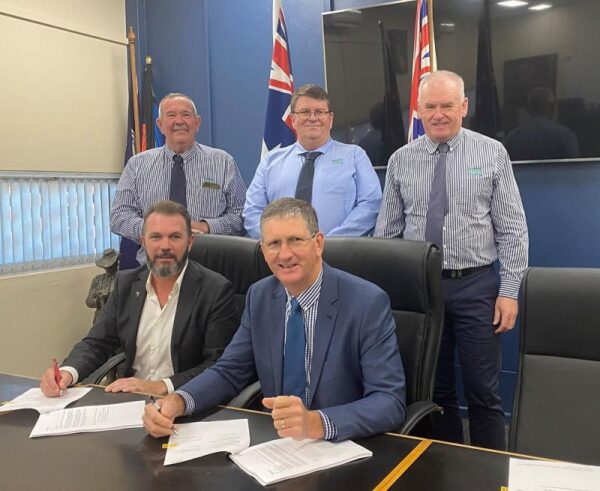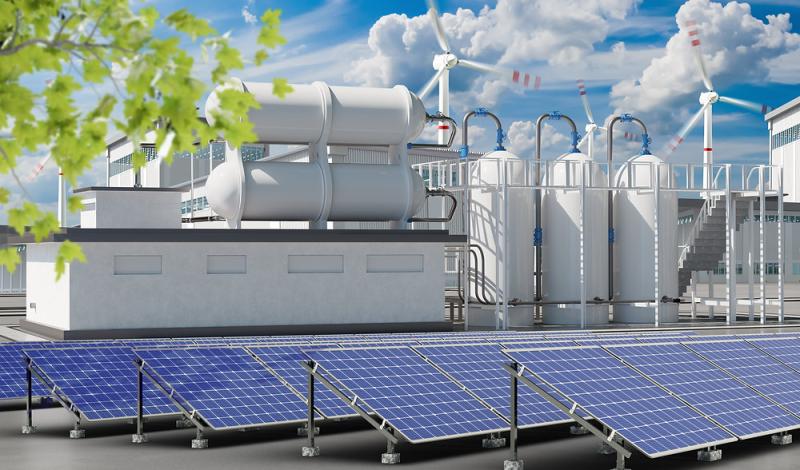The Hydrogen Collective (H2C) said the $15 million (USD 10.1 million) Goondiwindi Hydrogen project is moving to the procurement and construction phase following the announcement of a financial investment decision and the formal execution of a 20-year agreement with the Goondiwindi Regional Council.
H2C said the new hydrogen production facility will utilise the power generated from a 2.5 MW solar array and wastewater from the Goondiwindi wastewater treatment plant (WWTP) to produce green hydrogen via electrolysis with early estimates indicating the facility could produce up to 1,350 tonnes of renewable hydrogen per year.
While most of the initial output has been earmarked for local customers including agricultural users and heavy industry, H2C, which will manage the production and sale of the project’s hydrogen, said it is now in a position to confirm supply arrangements for other businesses, governments and project consortia requiring green hydrogen.
“Given that the majority of green hydrogen projects currently in development are not supplying the domestic retail market, H2C is in a unique position to discuss viable supply solutions with businesses and projects situated along the eastern seaboard of Australia,” the company said.
“While the majority of supply for the initial stages of the project has been secured for locals in Goondiwindi, H2C has the capability to rapidly increase green hydrogen production to meet additional requirements. Pending volume requirements, this supply can commence in the first quarter of 2024.”
H2C said construction of the Goondiwindi Hydrogen project will commence within the next month and it is planned to be operational before the end of the year.
Brisbane-based H2C said coupling a green hydrogen production facility alongside a wastewater treatment plant helped overcome issues relating to securing water supply. About nine litres of water are needed to produce 1kg of green hydrogen via electrolysis, with 8kg of oxygen as a by-product.
With more than 1,200 wastewater treatment plants around Australia, H2C Managing Director Simon Shaw said the Goondiwindi Regional Council is forging a pathway that other councils can follow.
“Producing and using renewable energy within the local area supports local economic growth and the reduction of carbon emissions across the region,” he said. “The leadership shown by Goondiwindi Council to support this innovative concept will provide the platform for other councils to develop similar concepts and realise similar benefits that support their regions.”

Image: H2C
Goondiwindi Mayor Lawrence Springborg welcomed the progress on the project and said the benefits of the green hydrogen production facility will go beyond generating commercial revenue for H2C.
Council said oxygen generated during the hydrogen production process will be used to aerate the wastewater, increasing operational efficiency and substantially extending the life of the border town’s wastewater treatment plant.
“Council has been very active in pursuing this project as it has the potential to save our ratepayers millions in the replacement cost of the existing aging infrastructure, as well as reduce the on-going operational expenses,” Springborg said.
“The technology we’ll be using isn’t necessarily new, but as far as we know it certainly hasn’t been used in this combination and towards this outcome before.”
“We’re very excited to be one of the first councils in the country to be involved with this process and to look at innovative ways of turning what was a waste product into a renewable energy source for local industry.”
H2C said it has secured $6 million for the initial stages of the project, including from Sydney-headquartered Juice Capital Energy, with further capital to be committed once local demand for green hydrogen increases.
The Queensland government has allocated $2 million in funding for the project as part of its $35 million Hydrogen Industry Development Fund.
This content is protected by copyright and may not be reused. If you want to cooperate with us and would like to reuse some of our content, please contact: editors@pv-magazine.com.









By submitting this form you agree to pv magazine using your data for the purposes of publishing your comment.
Your personal data will only be disclosed or otherwise transmitted to third parties for the purposes of spam filtering or if this is necessary for technical maintenance of the website. Any other transfer to third parties will not take place unless this is justified on the basis of applicable data protection regulations or if pv magazine is legally obliged to do so.
You may revoke this consent at any time with effect for the future, in which case your personal data will be deleted immediately. Otherwise, your data will be deleted if pv magazine has processed your request or the purpose of data storage is fulfilled.
Further information on data privacy can be found in our Data Protection Policy.